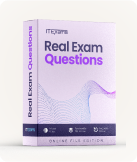CompTIA RC0-N06 - CompTIA Network+ Recertification Exam for Continuing Education Exam
Page: 1 / 94
Total 470 questions
Question #1 (Topic: Topic 1)
Which of the following protocols uses label-switching routers and label-edge routers to
forward traffic?
forward traffic?
A. BGP
B. OSPF
C. IS-IS
D. MPLS
Answer: D
Question #2 (Topic: Topic 1)
Which of the following refers to a network that spans several buildings that are within
walking distance of each other?
walking distance of each other?
A. CAN
B. WAN
C. PAN
D. MAN
Answer: A
Question #3 (Topic: Topic 1)
A technician, Joe, needs to troubleshoot a recently installed NIC. He decides to ping the
local loopback address. Which of the following is a valid IPv4 loopback address?
local loopback address. Which of the following is a valid IPv4 loopback address?
A. 10.0.0.1
B. 127.0.0.1
C. 172.16.1.1
D. 192.168.1.1
Answer: B
Question #4 (Topic: Topic 1)
You have been tasked with testing a CAT5e cable. A summary of the test results can be
found on the screen.
Step 1: Select the tool that was used to create the cable test results.
Step 2: Interpret the test results and select the option that explains the results. After you
are done with your analysis, click the 'Submit Cable Test Analysis' button.
[CompTIA-RC0-N06-7.0/CompTIA-RC0-N06-6_2.png]
found on the screen.
Step 1: Select the tool that was used to create the cable test results.
Step 2: Interpret the test results and select the option that explains the results. After you
are done with your analysis, click the 'Submit Cable Test Analysis' button.
[CompTIA-RC0-N06-7.0/CompTIA-RC0-N06-6_2.png]
Answer: B
Question #5 (Topic: Topic 1)
When convergence on a routed network occurs, which of the following is true?
A. All routers are using hop count as the metric
B. Allrouters have the same routing table
C. All routers learn the route to all connected networks
D. All routers use route summarization
Answer: C
